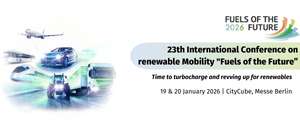Calls for rapid scale-up as SAF demand accelerates worldwide

According to the International Air Transport Association (IATA), airlines will need approximately 165 billion gallons of SAF annually by 2050 to achieve net-zero emissions.
In 2024, global SAF production totalled only 330 million gallons – about 0.3% of total jet-fuel demand.
Meeting 2050 decarbonisation targets will require an estimated 27% compound annual growth rate in production capacity and the construction of 5,000 – 7,000 new facilities worldwide.
This gap represents one of the most compelling growth opportunities in the global energy transition, with analysts projecting the SAF market could exceed $25 billion (€21 billion) by 2030 and reach $270 billion (€232 billion) by 2050.
Across major markets, policymakers are using mandates and incentive schemes to accelerate SAF adoption.
Today, more than 2 billion people globally live in countries with SAF blending mandates or strong incentives, such as tax credits – by 2030, this number is expected to grow to more than 4 billion people.
“Global demand for SAF is shifting from ‘if’ to ‘how fast,’” said Mihir Dange, CEO of XCF. “Mandates, incentives, and procurement are converging to drive volume. These dynamics underscore the value of XCF’s early-mover advantage and modular design, which we’re now extending globally through partnerships such as with New Rise Australia, a venture that is expected to develop three SAF sites across the continent to meet Australia’s growing demand for sustainable aviation fuel and renewable diesel.”
“As SAF adoption transitions from pilot programs to long-term supply, reliability and verifiability become the new currency of trust,” Dange added. “XCF is building the backbone of that transition by advancing the infrastructure and partnerships needed to make SAF the new standard across global aviation.”











